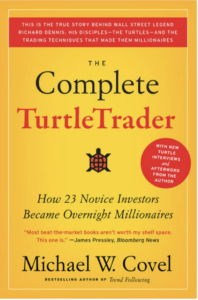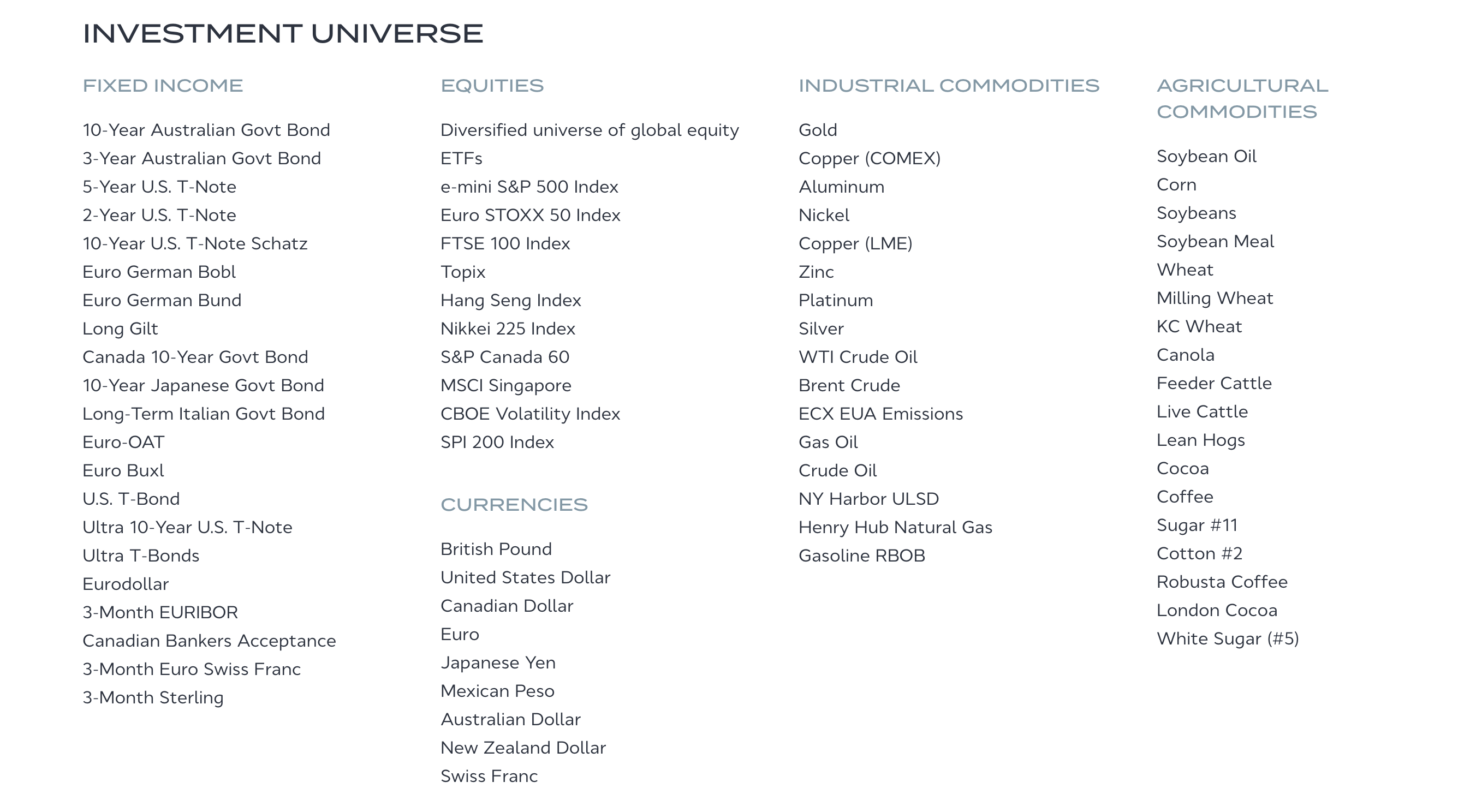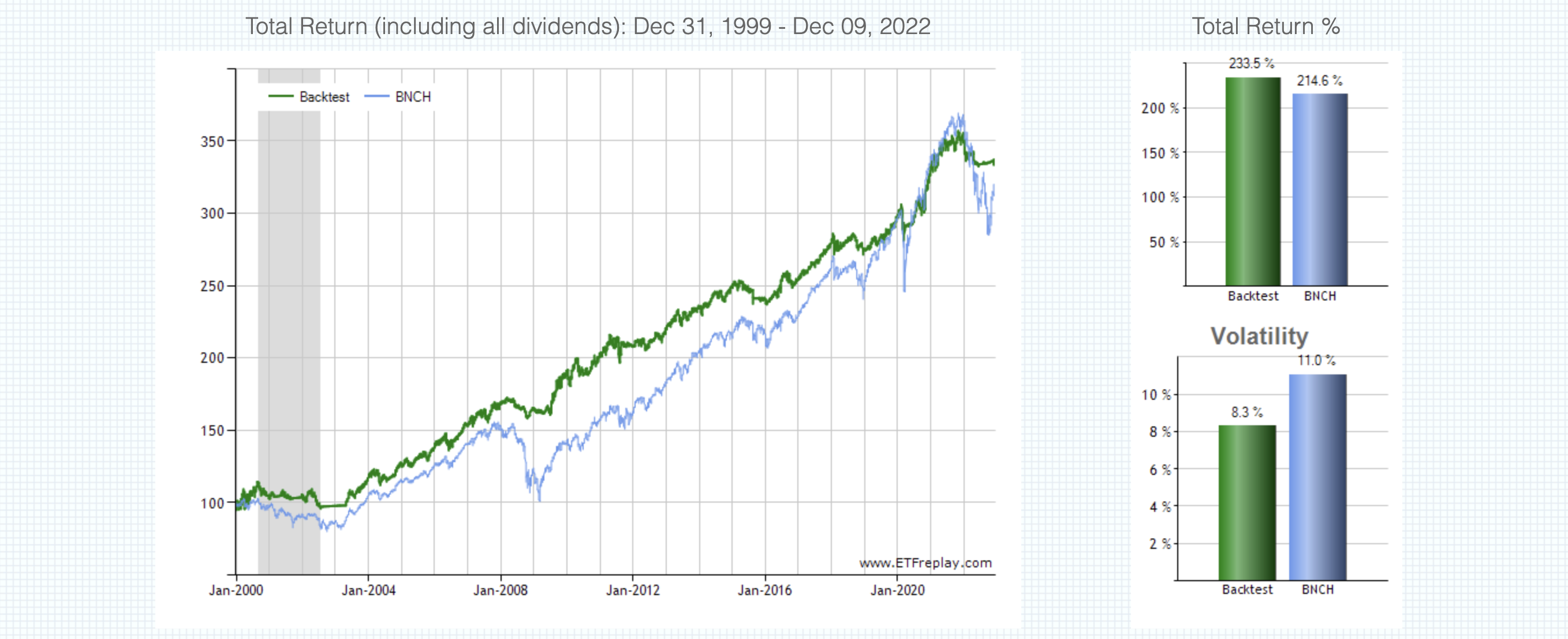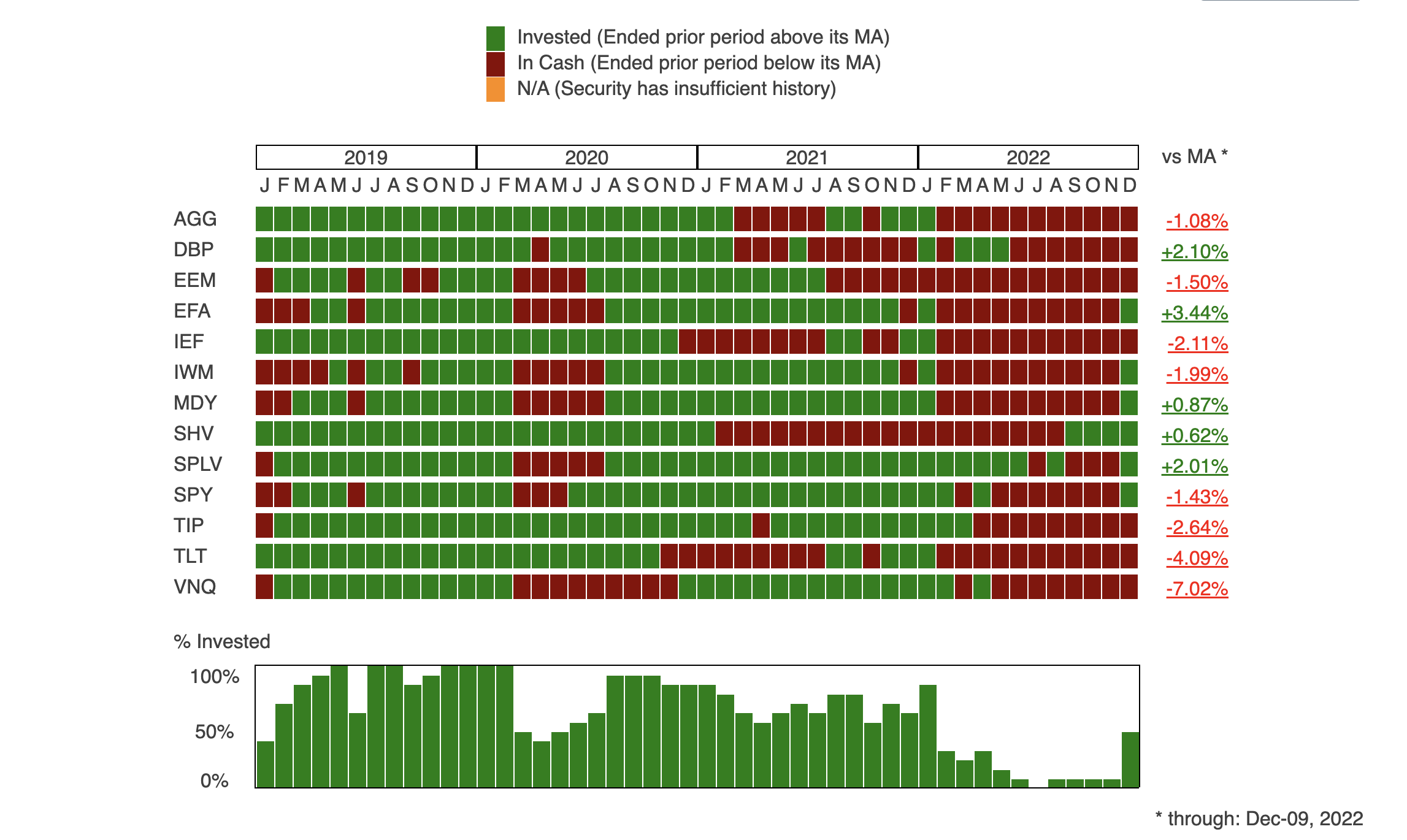Related Blogs
December 12, 2022 | Avalon Team
Trend-following managers are having a banner year in 2022 amidst a year of turmoil for traditional portfolios.
Trend-following has provided valuable diversification to investors who may have otherwise had much larger losses in traditional allocations.
Consider that the SG Trend Index, an index designed to track the 10 largest (by AUM) trend-following CTAs and representative of the trend followers in the managed futures space, is up 25.41% YTD.
Compare this to the traditional 60/40, which has lost over 15% YTD.
What is trend-following? Let me explain.
Trend-following or trend-trading is a trading strategy, often used by commodity-trading advisors(CTAs), that can benefit portfolios whether prices go up or down.
The objective of trend-following CTAs is to identify medium- to long-term trends in a systematic way. The implementation of a trend-following strategy on an instrument level includes two key elements: signal generation and sizing of exposure.
While most investors crave “cause and effect,” trend traders make no attempt to predict future price direction and follow precise rules (no guessing or wild emotions).
It involves a certain risk management that uses the current market price, equity level in your account, and current market volatility.
 Perhaps the most famous of all trend traders involves the true story of a group of people who famously became known as the Turtles.
Perhaps the most famous of all trend traders involves the true story of a group of people who famously became known as the Turtles.
Wall Street legend Richard Dennis made a fortune from following a few simple rules.
Convinced that great trading was a skill that could be taught to anyone, he made a bet with his partner and ran a classified ad in the Wall Street Journal looking for novices to train.
His recruits, later known as the Turtles, had anything but traditional Wall Street backgrounds; they included a professional blackjack player, a pianist, and a fantasy game designer.
For two weeks, Dennis taught them his investment rules and philosophy, and set them loose to start trading, each with a million dollars of his money.
By the time the experiment ended, Dennis had made a hundred million dollars from his Turtles.
Historically, trend-following has outperformed 60/40 during market crisis.
At their core, trend-following strategies capture the tendency of markets to gradually incorporate new information. This tendency creates persistent price trends, which may allow trend-following to be profitable on average.
Periods of market drawdowns tend to unfold over time, usually with identifiable catalysts and evolve gradually.
In 2022, it has been the story of persistently high inflation, a rapid and relentless shift in central bankers’ policy, and the unexpected war in Ukraine.
As one would expect, this rise in volatility has been accompanied by larger market moves and improved trend-following performance.
2022 has provided plenty of opportunities for CTAs:
- Rising interest rates have led to falling declining bond prices
- The surging U.S. Dollar has provided a backdrop of currency volatility
- The impact of rising interest rates and probable recession has led to declining stock futures
- Energy prices have seen periods of both sizeable gains and modest declines
In fact, one of the most important characteristics of trend-following is the amount of added diversification that can be provided versus the traditional stock and bond portfolio. That’s because trend-following strategies are often implemented across:
- Domestic and International Equities
- Grains, Meats, and Soft Commodities
- Metals and Energy
- Global Currencies
- International Bonds and Interest Rates
- U.S. Treasuries and Investment Grade Fixed Income
Here is an example of the investment universe from one of my favorite trend-following strategies.
So far in 2022, the SG Trend Index is on track for its best annual return since its inception in 2000. Looking forward, there’s a reasonable chance an environment of elevated macro-volaitlity will persist.
Monetary tightening will likely have an increasingly pronounced impact on earnings growth with, many forecasters projecting recessions in the U.S and Europe for 2023. Given current trends in monetary policy and some of the difficult trade-offs between growth, unemployment, and inflation, we’ll likely see significant macro-volatility.
Trend-Following Implementation
With the understanding of what trend-following is, why it might be useful, and why it may continue to provide benefits for investors, the next question is, how can an investor implement a trend-following strategy?
Here are three simple ways that investors can add trend-following to their arsenal of portfolio tools.
1. Work directly with a CTA.
Many databases exist that allow investors to search by performance metrics. Begin by looking for programs that are well-diversified rather than specific to one particular commodity or market. Pay close attention to the reported maximum drawdown and the Sharpe and Sortino ratios. These define the investor experience and quantify the levels of risk per unit of return. Low drawdowns and high Sharpe and Sortino ratios are ideal.
2. Managed Futures Funds
As many CTA programs only work with accredited investors, there are a number of managed futures products available in mutual fund format. Here are three of our favorites:
- Arrow Managed Futures Strategy Fund (MFTNX) is a mutual fund sub-managed by Dunn Capital Management, which happens to be among my favorite CTAs. MFTNX is up 63.85% YTD.
- Standpoint Multi-Asset Fund (BLNDX) was designed as an endowment-style multi-asset and multi-strategy fund. It provides broad diversification between uncorrelated, independent assets, using a trend-following methodology.
- Abbey Multi-Asset Fund (MAFIX) Similar to Standpoint, MAFIX provides exposure to managed futures and global equities with the money allocated to six separate sub-advisors to diversify the management risk.
3. Utilizing a trend-following strategy with a portfolio of ETFs.
One of the most basic but effective trend-following strategies is implementing a moving average methodology with an existing basket of securities. This approach was made popular in the white paper, “A Quantitative Approach to Tactical Asset Allocation” by Mebane Faber, first published in 2006 and updated in 2014.
The essence of the paper is to apply a 10-month moving average against a basket of securities. If the monthly close is less than the 10-month moving average, that asset is sold and moved to cash. This approach has provided investors with market-like returns with half of the drawdowns of an unmanaged, passive approach.
See how asset classes would be moved in and out of cash based on one simple rule?
Trend-following would have protected investors from greater loss during this past year as assets declining in value were methodically moved to cash.
In conclusion, this trend-following portfolio approach can provide you with multiple benefits including:
- Added diversification through non-correlated assets
- Higher returns and better protective properties than passive buy-and-hold approaches
- Strong performance during market downtrends
If you have any questions or have been considering hiring an advisor, then schedule a free consultation with one of our advisors today. There’s no risk or obligation—let's just talk.
Tags

Free Guide: How to Find the Best Advisor for You
Get our absolutely free guide that covers different types of advisory services you'll encounter, differences between RIAs and broker-dealers, questions you’ll want to ask when interviewing advisors, and data any good financial advisor should know about you and your portfolio.






